Growing lemons in pots is one of the most rewarding gardening experiences. Not only do potted lemon trees add beauty and fragrance to your space, but they also offer the satisfaction of harvesting fresh, juicy lemons right from your balcony, terrace, or backyard. Whether you’re short on garden space or want to enjoy citrus fruit year-round, planting lemon in pots is a smart and manageable solution.
This guide walks you through everything you need to know to plant lemon in pots the right way—from selecting the right variety and pot to proper care techniques that ensure healthy growth and maximum fruit production.
Why Grow Lemon in Pots?
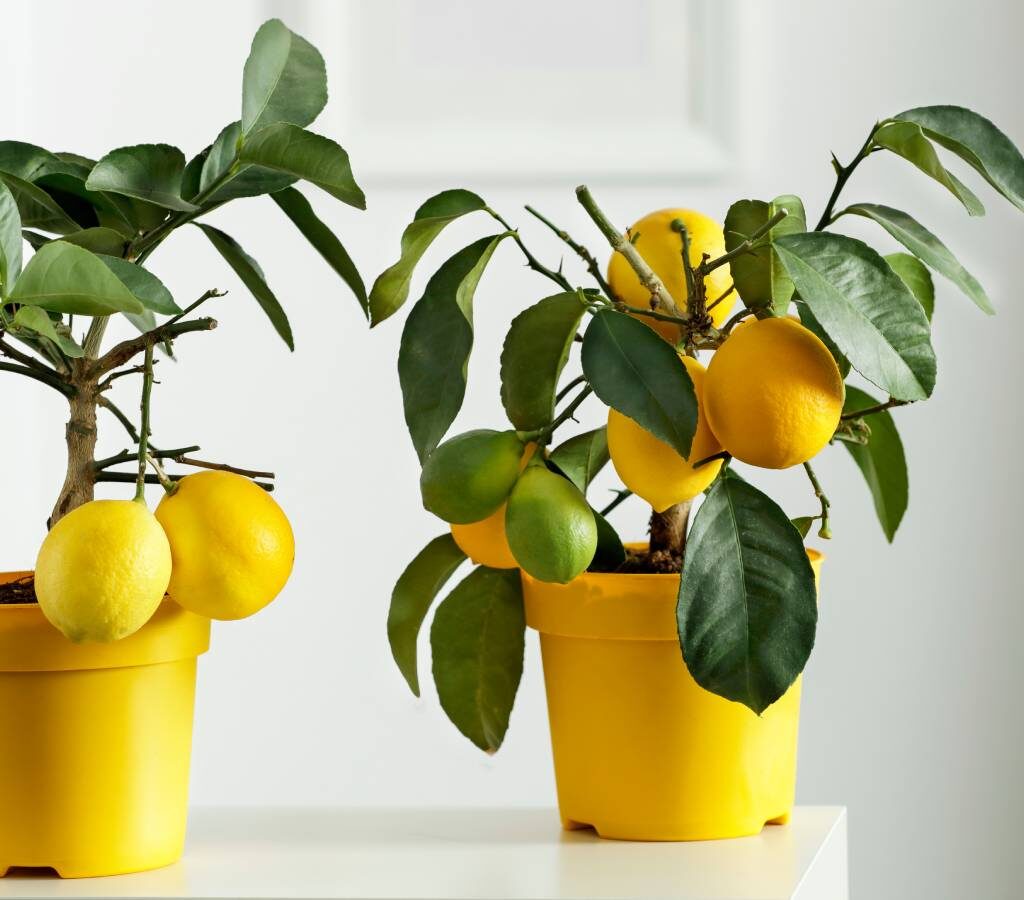
Lemon trees adapt well to containers and offer several advantages:
- Ideal for small spaces like balconies, patios, and rooftops.
- Easier to control soil quality, drainage, and pests.
- Portable, allowing you to move the plant for optimal sunlight or to protect it from extreme weather.
- Year-round harvests in tropical and subtropical climates.
- Adds aesthetic value with glossy leaves, fragrant flowers, and bright fruits.
Step 1: Choose the Right Lemon Variety
Not all lemon varieties are suitable for pot cultivation. You need a dwarf or compact variety that thrives in containers. Some ideal choices include:
- Meyer Lemon: A sweet-tart hybrid with thin skin and high productivity. Compact and great for pots.
- Ponderosa Lemon: Produces large fruits and adapts well to container growth.
- Dwarf Eureka or Lisbon: Traditional tart lemons, but dwarf versions are perfect for pot cultivation.
- Kagzi Lime (Indian variety): Small, tangy fruits; ideal for warm climates.
Select grafted plants from a trusted nursery, as they mature faster and produce fruit more reliably than seed-grown plants.
Step 2: Select the Right Pot
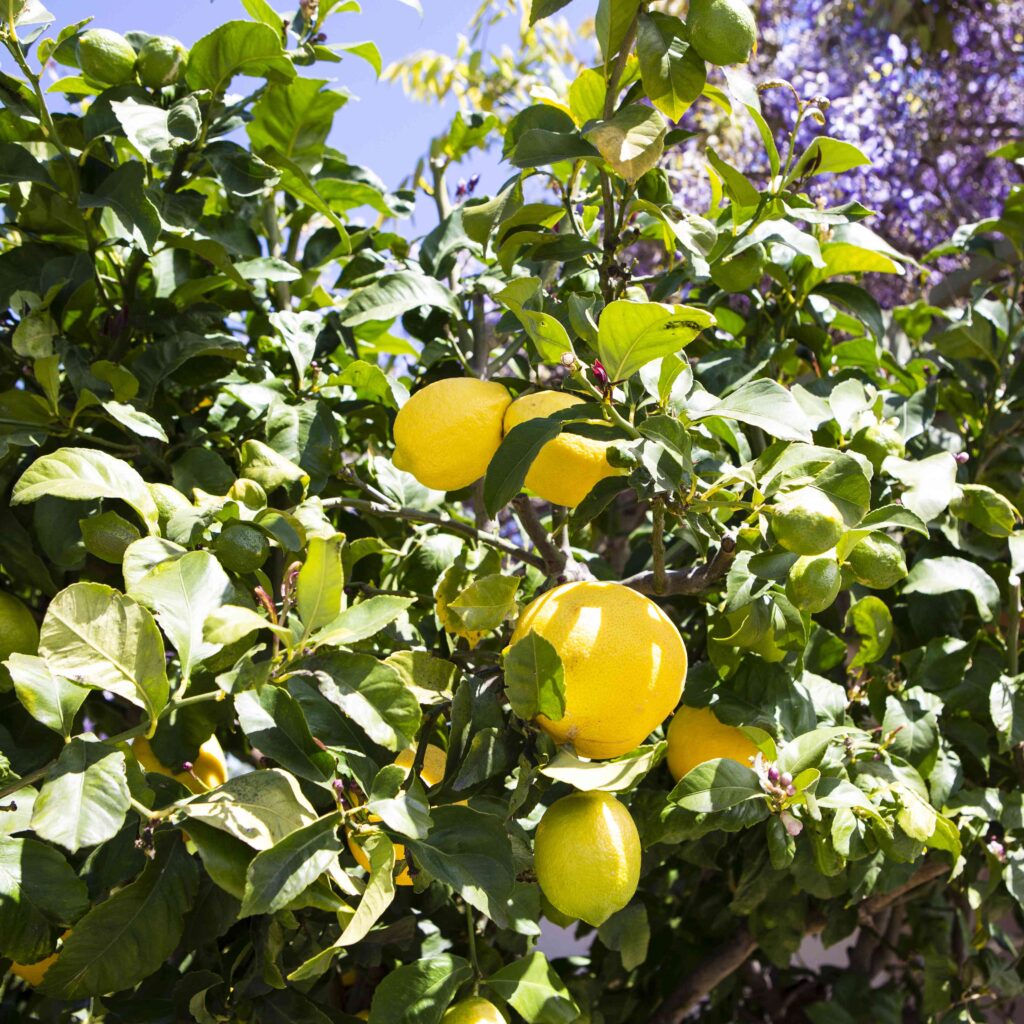
The pot you choose plays a crucial role in the success of your lemon tree.
Key Pot Requirements:
- Size: At least 18–24 inches in diameter and depth to allow root development.
- Material: Terracotta, plastic, ceramic, or wooden containers are all fine. Ensure it is lightweight if portability is needed.
- Drainage: The pot must have multiple drainage holes at the bottom to prevent waterlogging.
You can place a tray or saucer underneath the pot, but be sure to empty it regularly to avoid root rot.
Step 3: Use the Right Soil Mix
Lemon trees require well-draining, slightly acidic soil (pH 5.5 to 6.5). A poor soil mix can lead to stunted growth and diseases.
Ideal Potting Mix:
- 1 part garden soil
- 1 part compost or well-rotted cow dung
- 1 part river sand or perlite for aeration and drainage
- Add a handful of neem cake or vermicompost for added nutrients and pest resistance
Ensure the soil is loose and crumbly, not compacted.
Step 4: Planting the Lemon Tree
Step-by-Step Instructions:
- Fill the Pot: Add your prepared soil mix up to 2/3 of the container.
- Position the Plant: Remove the lemon plant from its nursery bag and gently loosen the roots. Place it in the center of the pot.
- Backfill: Fill the pot with soil around the root ball, ensuring the base of the stem remains above the soil surface.
- Firm and Water: Lightly press the soil to remove air pockets. Water thoroughly until excess drains out the bottom.
- Mulch: Add a thin layer of dry leaves or cocopeat on top to retain moisture.
Step 5: Provide the Right Growing Conditions
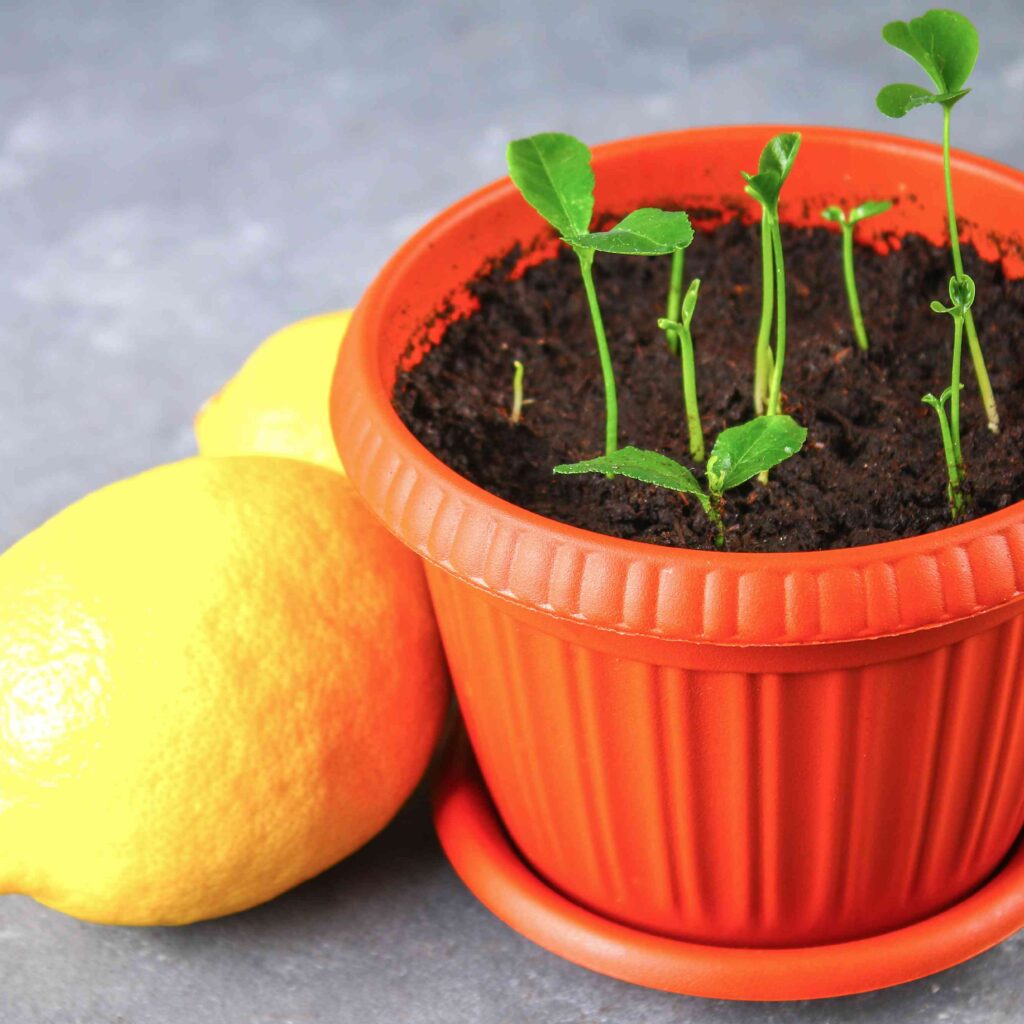
Lemon trees love warmth, sun, and consistent care. Here’s how to give them the best environment:
1. Sunlight
- 6–8 hours of direct sunlight daily is essential.
- Place the pot in a sunny spot—like a south-facing balcony, terrace, or window.
- Rotate the pot every week to ensure uniform growth.
2. Watering
- Keep the soil consistently moist, but not soggy.
- Water deeply when the top inch of soil feels dry.
- During hot weather, daily watering may be required; in winter, reduce frequency.
3. Fertilizing
Feed your lemon plant regularly to promote flowering and fruiting.
Monthly Fertilizer Schedule:
- Organic compost or cow dung – once a month
- Neem cake powder – controls root pests
- Banana peel fertilizer – adds potassium for better fruiting
- Lemon-specific liquid fertilizers – biweekly (optional)
4. Pruning
- Prune lightly to maintain shape and airflow.
- Remove dead, yellowing, or crossing branches.
- Cut off suckers (shoots growing from below the graft) to ensure energy goes into fruiting.
Step 6: Support During Flowering and Fruiting
Lemon trees in pots can start flowering within a year if well-cared-for. Here’s how to support fruit development:
- Avoid moving the plant during flowering to prevent flower drop.
- Pollination is usually natural, but in closed balconies, hand pollinate using a brush.
- Once fruit sets, add potash-rich fertilizer to boost fruit size and flavor.
- Thin out excessive fruits to prevent the plant from being overburdened.
Common Problems and Solutions
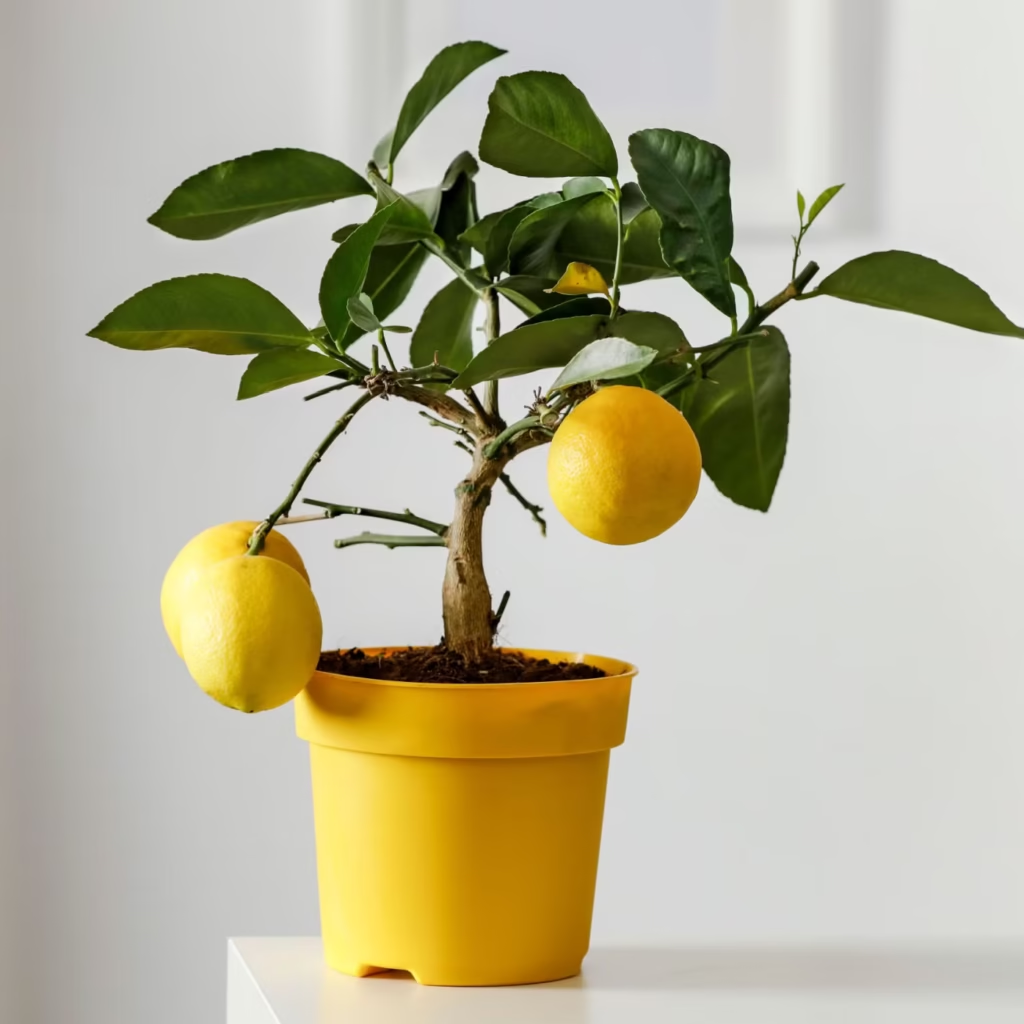
| Problem | Cause | Solution |
|---|---|---|
| Yellow Leaves | Overwatering or nitrogen deficiency | Adjust watering; add compost |
| Leaf Curl | Pest infestation or watering stress | Use neem oil spray weekly |
| No Flowers or Fruits | Lack of sunlight or poor nutrition | Shift to sunnier spot, feed potassium-rich fertilizer |
| Fruit Drop | Temperature stress or nutrient imbalance | Avoid moving plant; add balanced fertilizer |
Winter and Seasonal Care
- Move the plant indoors or to a sheltered spot during frost or extreme cold.
- Reduce watering frequency in winter.
- Check for pests like aphids or scale during colder months, as plants become more vulnerable.
Harvesting Lemons in Pots
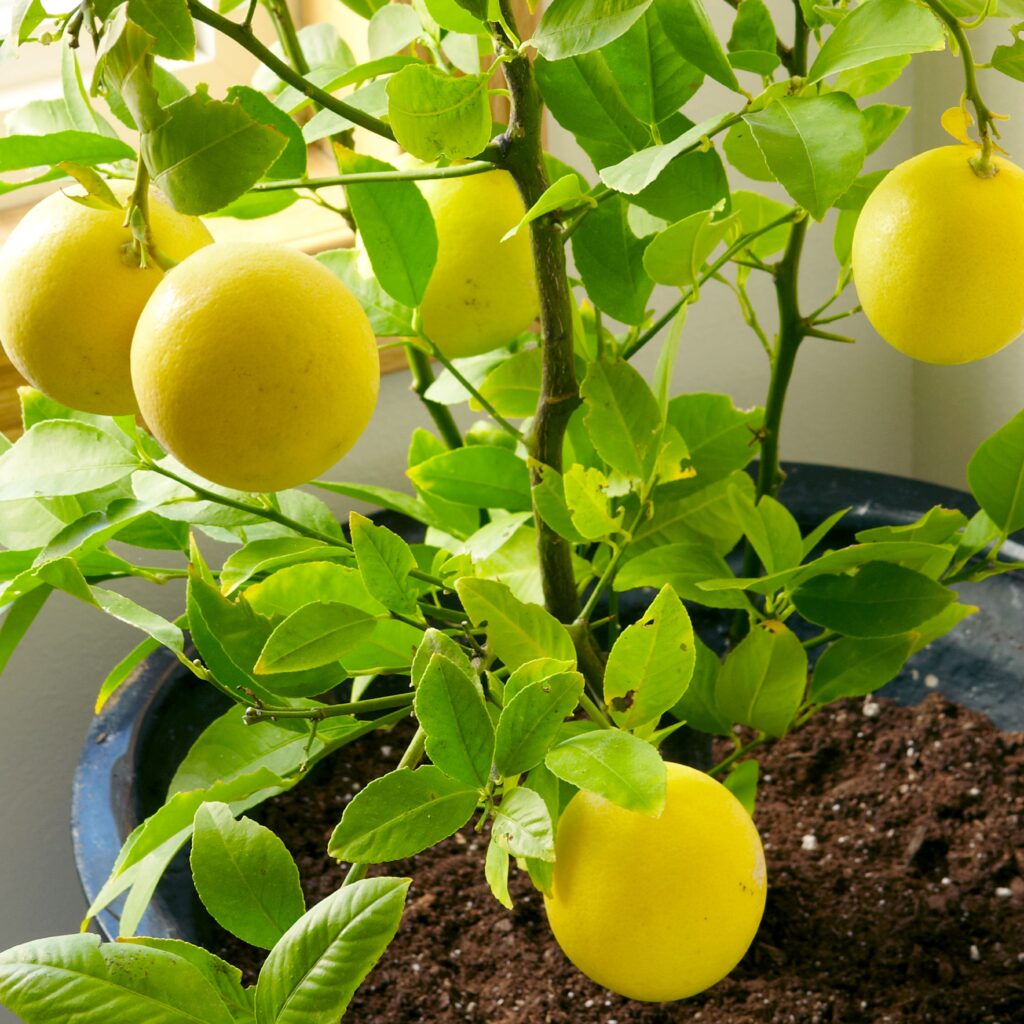
- Lemons are ready to harvest when they are firm, fully yellow, and slightly soft to the touch.
- Don’t pick them too early—they don’t ripen off the tree.
- Use a pruning shear or twist gently to remove fruit without damaging the stem.
Benefits of Growing Lemon in Pots
- Compact and manageable size for urban homes
- Continuous harvests with proper care
- Fresh lemons for cooking, drinks, and health
- Natural air purification and visual appeal
- Easy to protect from pests and bad weather
Conclusion
Planting lemon in pots the right way ensures a thriving, fruitful plant that can produce for many years. From selecting the proper variety and pot to providing the right mix of sunlight, water, and nutrients, each step plays a vital role in your plant’s success.
With a little effort and consistency, your container lemon tree can become a centerpiece of your balcony garden, offering not only fresh citrus fruit but also the joy of nurturing life in your home.
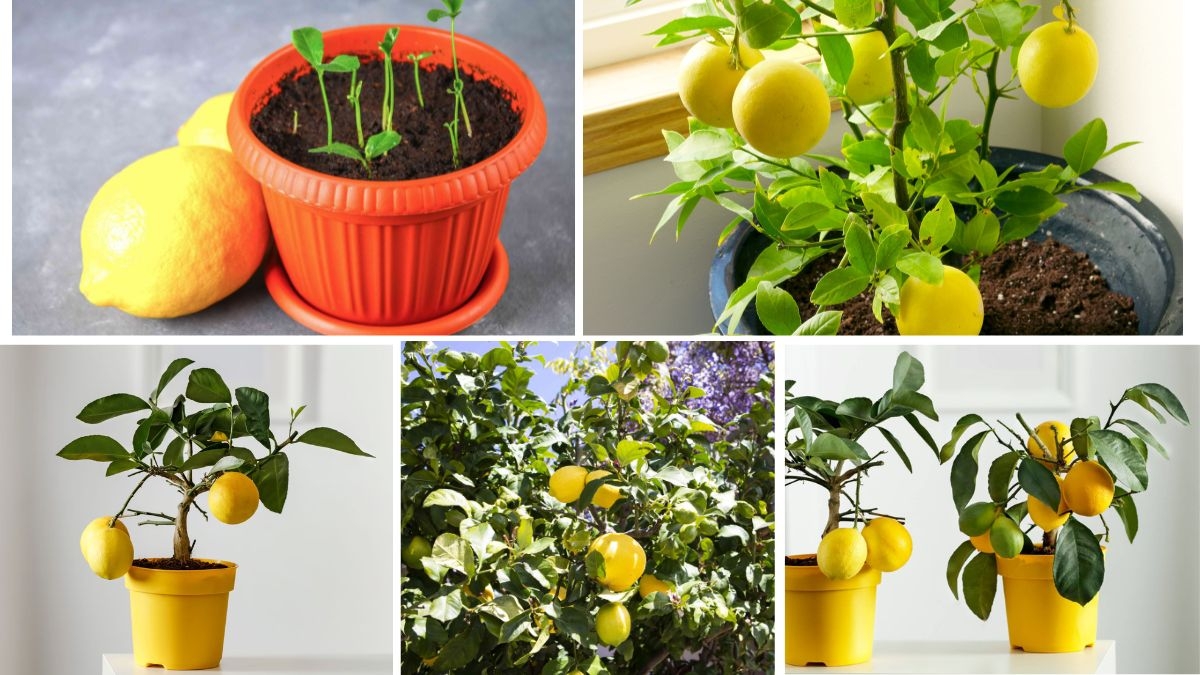




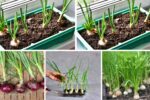
Leave A Comment